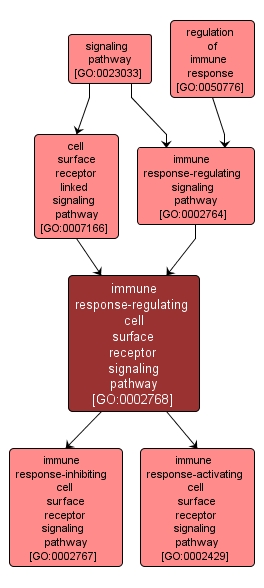GO TERM SUMMARY
|
| Name: |
immune response-regulating cell surface receptor signaling pathway |
| Acc: |
GO:0002768 |
| Aspect: |
Biological Process |
| Desc: |
A series of molecular signals initiated by the binding of an extracellular ligand to a receptor on the surface of the target cell capable of activating, perpetuating, or inhibiting an immune response. |
Synonyms:
- immune response-regulating cell surface receptor signalling pathway
|
|

|
INTERACTIVE GO GRAPH
|














